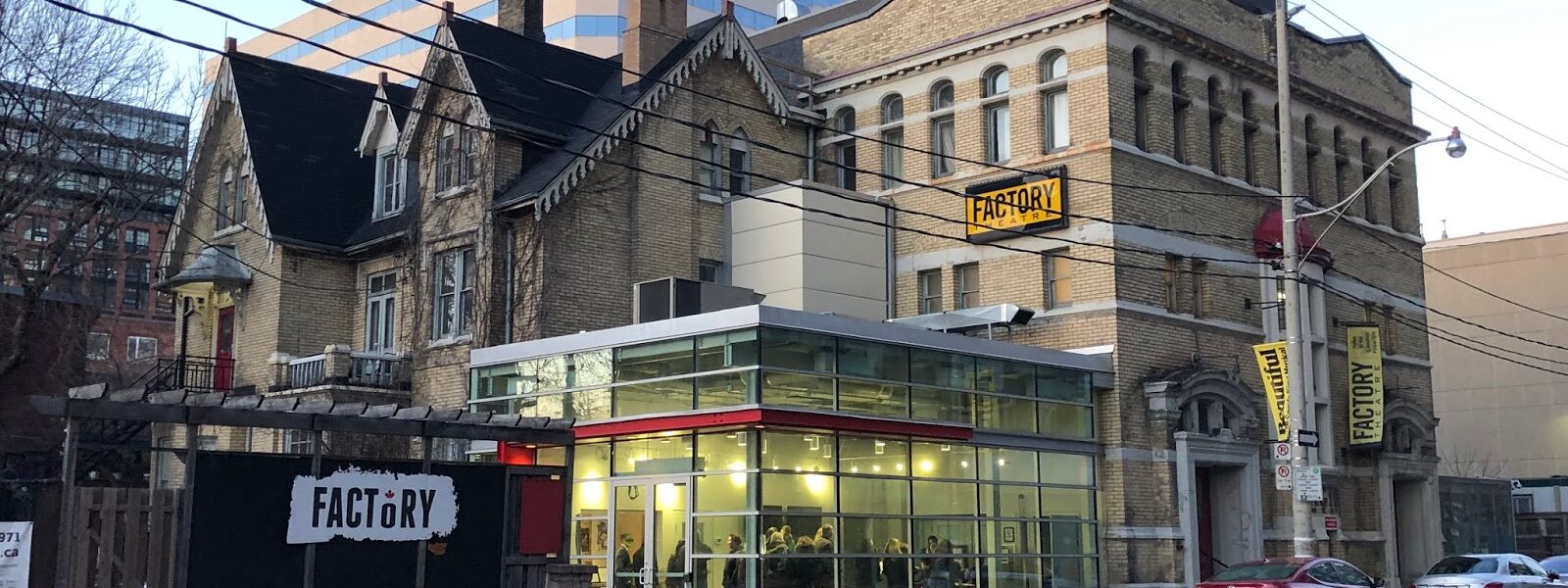Our Building

There’s a rich and far-reaching history of the heritage building that Factory Theatre has occupied since 1983. With the help of local historian Joanne Ducette and some archive material found in the building, some interesting facts about the history of the building and the backstage areas of the theatre have been unearthed.
Factory is actually two buildings, both of which have heritage designation. The original “house” portion (that currently holds our administration offices, lounge and greenrooms) was built in 1869 by Irish immigrant John Mulvey. The house was built in the Queen Anne Gothic style and has original and distinct bargeboard under the asymmetrical rooftops (look for the shamrock design in one of them).
Arriving in Toronto as a young child, the Mulvey family escaped the Irish Potato Famine and settled in the nearby area – which was known at the time as Claretown. John Mulvey eventually rose to become a City Alderman and successful local merchant, owning many of the stores on nearby Queen Street West. He is also suspected to be a Fenian sympathizer and many Catholic/Protestant tensions of early Toronto played out right outside the front door of Mulvey’s house on Bathurst Street. Eventually, he lost his fortune in the Long Depression of the 1870s, only to have his son (Thomas Mulvey) regain the family’s wealth and notoriety, before moving to Ottawa to become a high ranking civil servant.
The extension of the building facing Adelaide Street that houses the theatres was built in 1910 by St. Mary’s Catholic Parish a year after they purchased the building from the Mulvey family. Many of the original features, such as the proscenium arch and balcony in the Mainspace and the bowling alley floor in the Studio Theatre, still exist today.
Since inhabiting the building in 1983, Factory has adapted the space to its own uses: the newly renovated Mainspace lounge no longer resembles the bedrooms that would have occupied the space; the Mainspace lobby, stage extension and permanent seating changed the church hall into the current theatre you see today; and, the nursery became the workshop.
Factory purchased the building in 1999 and has been restoring and caring for it ever since.
Factory stands on the land under The Dish With One Spoon Wampum Covenant, a treaty between the Anishinaabe, Mississaugas and Haudenosaunee that binds them to share the territory and protect the land. Subsequent people (Indigenous and settlers alike) have been invited into this treaty in the spirit of peace, friendship and respect. Today, the meeting place of Toronto (Tkaronto) is still the home to many Indigenous people from across Turtle Island. Factory would like to acknowledge with gratitude all the storytellers, stewards, and caretakers – recorded and unrecorded – that continue to host Factory at this gathering place for over 30 years.
